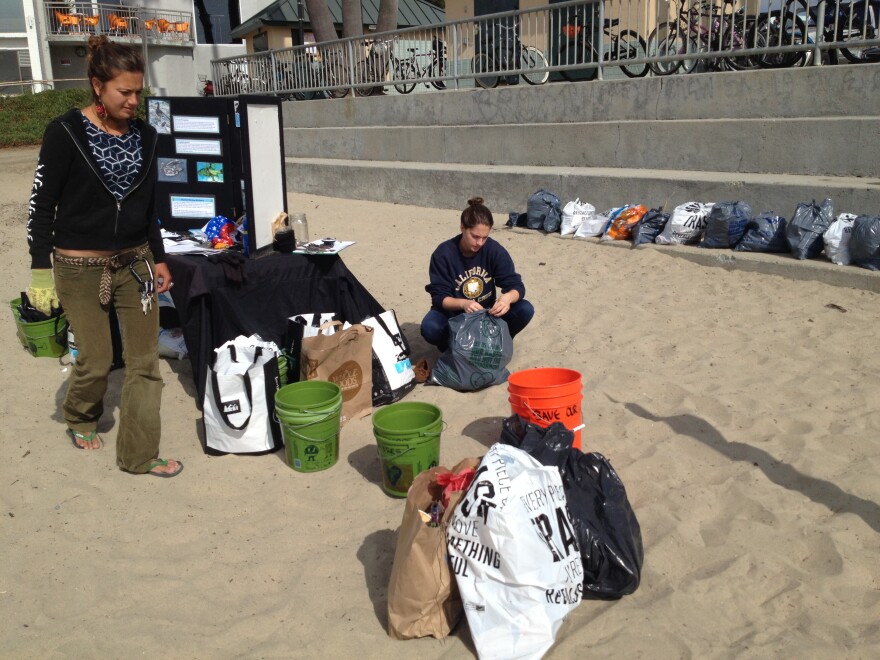Labor Day weekend often marks the final days of summer. And it’s been another busy summer at Santa Cruz’s Cowell Beach, despite the fact that it’s been named one of the state’s most contaminated beaches several years in a row. Finding the source of that contamination has been a challenge.
?On a warm and sunny morning at Santa Cruz’s Cowell Beach, Rachel Kippen watches as volunteers scour the sand for trash. Kippen is the program manager for Save Our Shores, a local organization that hosts monthly beach cleanups in Santa Cruz. She checks the volunteers bags, sorts out recyclables, and tallies each type of trash collected including baby diapers, beer cans, and lots of tiny bits of Styrofoam. “Cowell’s is a city beach and really, really is a popular spot for a lot of people come over the hill and from other parts of California, essentially funnels them right here,” said Kippen.
That popularity can explain all the trash found on this beach, but trash does not explain Cowell’s biggest pollution problem. For the past four years, it’s held the number two spot on Heal the Bay’s annual beach bummer list based on consistent, elevated levels of bacteria, including E. Coli. The non-profit monitors West Coast beaches and reports weekly conditions on its website. Reached by phone in Santa Monica, Heal the Bay’s Amanda Griesbach says those weekly conditions are important because water quality is extremely variable. “So just because Cowell Beach didn’t do well in our annual report doesn’t mean that you shouldn’t swim there,” Griesbach said. “You should definitely check the most recent beach water quality grade on our beach report card.” That variability makes the city’s search for a main source of contamination much more challenging.
Sitting in a conference room at the Santa Cruz Public Works Department, Steve Wolfman has bacteria data spreadsheets laid out on the table. Wolfman is the City’s Wastewater and Stormwater Engineer. He says several potential contamination sources have been identified, but there’s no smoking gun. “As soon as we find that there’s a specific thing that we can correct, then we correct it,” said Steve Wolfman. “But finding these problems, it’s just not easy.”
Over the past three summers, rotting beach seaweed has been tested and ruled out as the source. Then there was the case of a residential bathroom draining into nearby Neary Lagoon. That was fixed. Stormwater drainage is another potential source. Annually, nearly half of the stormwater from the city’s Westside drains into Cowell’s by way of Neary Lagoon. And in the summer, that water often lays dormant in pipes where bacteria can grow. Wolfman says the city is working to divert the water to the wastewater plant before it reaches the sea. “Finding these problems, it’s just not easy,” said Wolfman. “There’s a lot of pipes in the ground in a city the size and the age of Santa Cruz and being sure that they’re all separated from the stormwater system is not easy.” He says the city has also been looking at wildlife as contributor to the contamination. “We anticipate that that’s part of the issue at Cowell’s Beach, a lot of birds, a lot of fish from Neary lagoon, and just your general contamination that comes with wildlife,” said Wolfman. He thinks that overall bacteria levels from this summer will be lower than last summer. That said, Wolfman sees no need for beachgoers to panic. “I personally would swim there and I would let my children swim there, yes,” he said. Wolfman is hopeful that Cowell’s will continue to show improvements by next summer.


